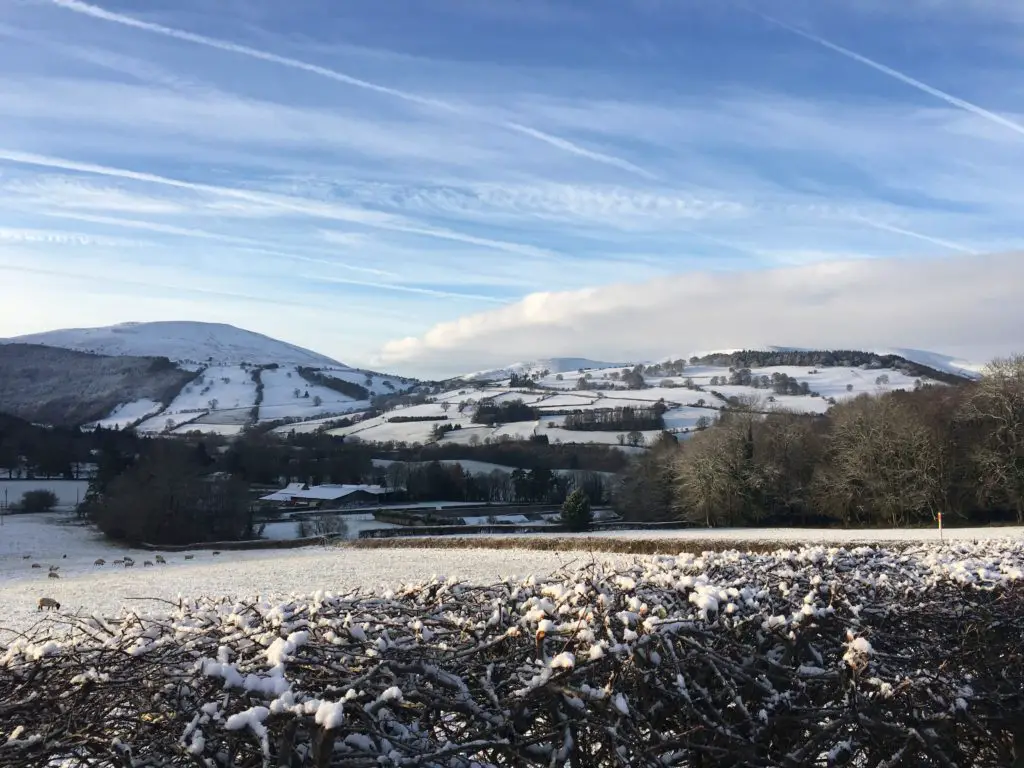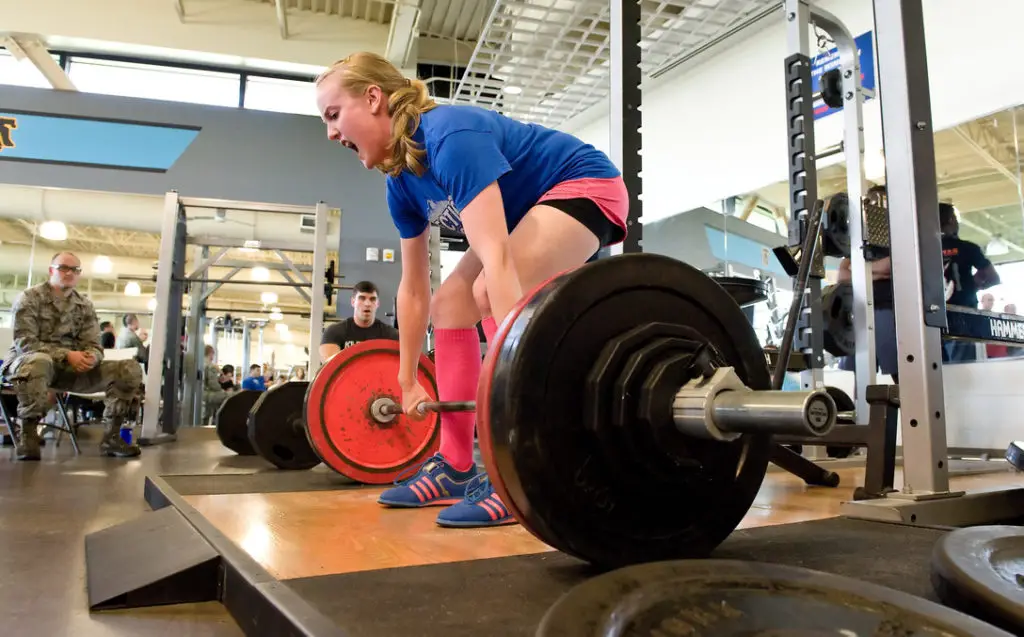Hiking Training in the Gym (Using Nearly Only Weights)
Hiking training in the gym: it’s an unusual concept considering the best place to train for a hike, or trek, is outdoors. But wait! There’s more to this than meets the eye.
I took some advice from Irene, my physiotherapist, and have now adopted a weight training program that not only mimics the way my body moves when hiking, but also increases strength and endurance in key muscles.

With a little planning and shifting of some moderately sized weights you can reap huge benefits from spending only a few hours in the gym.
Training in the environments where you plan to hike and trek is still key developing your fitness. For example, if you going to do a lot of hillwalking then you need to get out and walk up-and-down big hills. I’ve written a guide full of hillwalking tips for beginners, take a look and let me know what you think of it.
Likewise, hikers have always been encouraged to get out and walk increasingly further and further to build up strength and improve their cardiovascular fitness.
But I also know that gym work plays a vital role in shaping the kind body we need for outdoor activities.
Anyone that’s read any of my posts today will already know what’s about to come…
Many years ago, back when I was a soldier I used to do a lot of running and walking. I still do run and hike a great deal, but over the past couple of years I found it increasingly harder to push my body to the peaks of fitness that I’ve taken for granted in the past.
For several months in late 2018 my fitness didn’t seem to progress. Frustration set in and, for a period of time, hiking became boring.
About a month ago I decided to sit down and try work out why I couldn’t push pass this plateau (read: malaise) in my fitness. Delving back into my past life as a soldier I soon realised that not only have I been a pretty fast and consistent runner, as well as being regularly tested on my speed marching skills, I was also very active in the gym.
For many people this might not seem like much of an epiphany, but for me, and many others who lead a busy life in which they have to cram in their hiking training, it was a lightbulb moment.
I decided the best approach would be to go back through some of my old training journals I’ve kept from my days in the army and analyse the various training methods and identify any insights they gave me.
Whilst reading, I noticed that gradual improvements in both strength and overall fitness coincided with these…
7 Exercises I Used to Build Muscles Used for Hiking and Hillwalking
For the purposes of this article I’ve decided to focus on how you can most effectively train for walking up and down hills. Any form of muscle gain will be beneficial to everyone, hikers and walkers alike.
Walking uphill is relatively easy, if you’re fit. That doesn’t mean we can’t improve our performance, recovery time and ease with which we walk up hills.
You may will be surprised to discover that downhill walking requires a high degree of muscular stability and endurance. Walking downhill can be pretty tough going especially if you’re moving across rough all very and uneven terrain. One distinct advantage I have over other walkers is my huge Hobbit like feet which keep me stable in difficult terrain.
Enough of the babbling, here are 7 exercises I’ve used for hiking training in the gym.
1. Squats for Powerful Legs and Glutes.
Nothing builds huge, powerful muscles like squats do. Don’t believe me? Look at the workout plan Henry Cavill followed prior to filming the Superman. I-M-P-R-E-S-S-I-V-E.
Squats have two benefits: first, you’re going to look good in lycra! Second, this exercise targets the same muscles used when hiking and working your way up steep inclines. It’s a win-win for aesthetics and fitness
2. Deadlifts for All Round Strength

Like squats, deadlifts work the upper legs and buttocks. There is an additional focus on your hamstrings, another important muscle group especially if you’re going to be hill climbing.
Deadlifts also work the lower back, and this is an important point. Regardless of the activity you taking part in, you’re likely to be carrying a fair amount of weight on your back. Building strong core and support muscles in the stomach and back will help reduce fatigue and the risk of injury.
3. Lunges for the Dreaded Downhill Routes
As mentioned earlier, hiking downhill can be hard, if not harder, on your legs than climbing uphill. Ask any seasoned hiker and they’ll agree that the downhill legs of any route are the biggest contributors to sore thighs.
Lunges mimic the effects of walking down hills. They also work and strengthen many of the core and stabiliser muscles you’ll engage when hiking.
4. Calf Raises for Stability

The calf muscles are important stabilisers and improving their overall strength and endurance will pay huge dividends.
Strong calfs reduce the risk of knee pain and ankle injuries. Compared to the other exercises, this one seems quite boring – trust me when I say that the knee pain that comes a result of long hikes is not a fun experience.
5. Kettlebell Swings for All-Round Awesomeness
Many years ago I was working out in the gym in Bosnia when a Russian soldier walked over and started to talking to me (in broken English). He suggested I put down the dumb bells I was using and try a kettlebell session.
One painful hour later I finally made it back to my bunk! Kettlebells are quite simply the best exercise I’ve been introduced to. They build your cardio, blowtorch body fat (not literaly, but I’ve always wanted to use that phrase in a post!) and build strength fast. What’s not to love about them?
6. Crunches and Situps for Stability (and Your Beach Body)
A strong core is vital to stability. Your abs and lower back muscles support an awful lot of body weight. They also help maintain correct posture and support the bulk of your backpack.
And don’t forget how great you’ll look on the beach when you rip off your t-shirt and flaunt the washboard beneath! Ab exercises are awesome.
7. The Cycling Machine of Agony
Okay, a cycling machine isn’t really a form of weight training, but it does give you another tool for building your hiking fitness. For the best results, I recommend jumping on a real bike, dropping the tyre pressure by about 50% and cycling for an hour. This is a guaranteed way to work your legs and glutes hard.
An exercise bike is a great alternative to cycling outdoors. Just be sure to crank up the resistance and really work your muscles.
Unsure of What Works Best?
Rather than try to give you an exercise routine it doesn’t fit with your needs, or lifestyle, I think its best to speak to a personal trainer and build a custom program for your hiking training. Most gyms have train is on hand and give you ample advice on how best to build up your muscle strength and endurance there’s big hiking and walking events.
The advice is normally free, unless of course you want to pay for dedicated personal trainer.
A Few Final Tips for Your Hiking Training
Before we wrap up this post I’d like to look at some other important areas we should all incorporate into a hiking training plan. The points covered below are a mix of considerations for training in and out of the gym.
Consider Using Walking Poles
For many people walking poles our big no-no. Looking back to my early days of hiking and hill walking, in particular the time shortly after I left the army, I remember refusing to use walking poles.
Over the years my attitude has changed. I’ve done a lot of the research and found that simply using poles for walking produces a huge amount of the strain and stress placed on your knees one hillwalking. Admittedly, this post isn’t specifically about hillwalking, but are you really hiking if you never walk uphill?.
I highly recommend hikers of all ages buy a pair of walking poles – prevention of injury is better than cure.
This scientific article that describes the impact of even a casual walk down a steep incline.
Use a Balance Ball for… Balance!
Not just for balance. I’d always considered a balance ball to be a ‘tame’ form of training (by that, I mean useless – apologies to all the physiotherapist reading this). Just recently I was shown the error of my ways!
A balance ball not only helps to improve your balance, but also strengthens the muscles in your ankles and lower legs – exactly the muscle group that stabilise our legs and help prevent the horrible hiking injuries that can lay us up for weeks.
Install a Workout App on Your Smartphone.
Sometimes it’s hard to keep yourself motivated, especially when you’re in gym. Using an app, preferably one that has a virtual trainer, is a great way to keep your mind focused on the task in hand.
Many of the smartphone apps now have functionality that Allows you to share your workout with friends and contacts. Some apps, like Peloton, give you the option of going head-to-head in what can only be described as an insane training frenzy that will you leave you foaming at the mouth!
I’ve used a number of different apps for my hiking training and the one the trumps all others is: Strava!
Stretch Every Time You’ve Trained

Regardless of where your hiking training takes place, you should always stretch off after a session.
Irene, my Abdingdon-based physio, has kindly provided me the list of stretches you can use post workout. Each of the structures is suitable for hiking training in the gym or after a long day of walking, or tracking.




